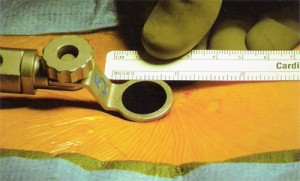What Is Minimally Invasive Spine Surgery?
 The latest in treatment options for spinal disorders or chronic back and neck pain. Using innovative techniques, cutting-edge technology, and evidence-based medicine, minimally invasive spine surgery (MIS) may be a treatment option for your spinal disorder or chronic back and neck pain.
The latest in treatment options for spinal disorders or chronic back and neck pain. Using innovative techniques, cutting-edge technology, and evidence-based medicine, minimally invasive spine surgery (MIS) may be a treatment option for your spinal disorder or chronic back and neck pain.
Compared to traditional open spine surgery, minimally invasive spine surgery utilizes the knowledge of important anatomy, along with cutting-edge technology, to treat your spinal condition without causing undue injury to the surrounding soft tissues. Highly specialized tools and instrumentation provide for the safe and effective treatment of your pain.
Advantages of MIS include:
- Less post-operative pain: Recovery time will vary based on the procedure. However, patients who have had minimally invasive spine surgery are discharged in half the time of traditional surgery. This means you’ll be in pain for less time post-surgery too.
- Quicker recovery: Although each surgery requires a different amount of recovery time, a patient will spend about half the time recovering from a minimally invasive surgery. For various types of lumbar fusion surgeries, a patient who goes through minimally invasive surgery would typically go home in 2-3 days, where previously they stayed in the hospital 5-7 days.
- Smaller surgical incisions: Minimally invasive spine surgery utilizes a wide variety of advanced techniques. This includes lasers, endoscopes, operating microscopes. These tools allow procedures typically done with a large, open incision can be done through small openings. Since minimally invasive spine surgery uses smaller incisions, there will also be:
- Reduced blood loss
- Less soft tissue damage
- Less scarring
- Improved function
- Reduced blood loss
